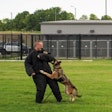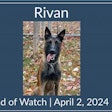As a respected woodsman and volunteer fireman, Jonni Honda had at one time been on favorable terms with local law enforcement in Northern California, even assisting the Trinity Sheriff's Office from time to time as a search and rescue member. That all changed in the fall of 2006 when another aspect of Honda's nature came to light: The man was an accused child molester.
Since Honda's mountaintop home gave the woodsman the high ground and officers a good reason to take him down elsewhere, Trinity County SO investigators opted to wait him out. Their prudence had seemingly paid off the day California Highway Patrol officers spotted Honda driving along the highway. But at the sight of rotators in his rearview mirror, Honda hit the gas, precipitating a vehicle pursuit that ended miles later at the snowline where the 51-year-old bailed from his car.
Taking refuge in the snow-capped wilderness while wearing only sandals on one's feet would have been a bad move for most people. But Honda was not like most people. He exploited his know-how in eluding capture for several days.
Honda emerged in an area conducive for cellular reception, and called his girlfriend to pick him up. The two drove to a Super 8 motel where they rented a room. As Honda lay on the bed, his girlfriend realized that while Honda had successfully evaded capture, he had not fared as well at avoiding the elements. He had severe frostbite afflicting both his feet. She cared for his injuries, then left, and he resorted to self-medicating. His drug of choice: methamphetamine.
Under Fire
Within a day of Honda's holing up in the motel room, the Eureka Police Department received information of the man's whereabouts. The idea of dealing with a man desperately determined to avoid arrest and under the influence of meth was not something Eureka officers wanted to even think about it. The timing was anything but good: The previous 14-month period had seen the department saddled with four officer-involved shootings under its belt.
That the smalltown department would fall prey to such a statistical anomaly was as unpredictable as the confluence of factors that precipitated the incidents. More predictable had been the fallout. No matter that each of the shootings had ultimately been ruled justifiable, the department found itself under the microscope with allegations of trigger-happy cops run amok.
That the circulation of such comments was confined largely within the confines of local papers and among those so inclined to believe such things was not lost on Eureka's acting chief, Capt. Murl Harpham.
Still, Harpham and his staff were sensitive to the implications of what a fifth shooting could mean for the department, particularly since the local D.A. had already attempted to file charges on the chief of the department and an incident commander for one of the shootings-despite their being 100 yards from the scene.
There would be no leeway with Honda, but Capt. Harpham was committed to ensuring everything possible was done to get the man into custody without injury to bystanders, his staff, or the man himself. Whatever the man's culpability for the charges, Honda would have to answer for them.[PAGEBREAK]
Making the Call
Senior Det. Neil Hubbard was at least initially optimistic. He had the advantage of knowing Honda firsthand, having worked with the man from time to time on rescue callouts when they'd both worked with the Trinity County SO. That the two men had hitherto enjoyed a mutual respect for one another was cause for Hubbard's optimism that Honda might yet be taken without incident. As much by virtue of his assignment as by his relationship with the man, Hubbard was destined to be the primary negotiator with Honda.
A quickly established containment was thrown up around the motel and the necessary evacuations were made. Then Hubbard made the call into Honda's room. The two men spoke, but it soon became clear that while Honda still thought enough of Hubbard to talk with him, he had no intentions of coming out of his own volition.
The situation having gone barricade, SWAT assumed control as other law enforcement agencies arrived to assist, among them the Humboldt County Sheriff's Department.
Harpham's son, Ronald, was a Eureka detective and SWAT team member. He joined the department's senior sniper, Officer Robert Metaxas, across the street inside a commercial building that overlooked Honda's motel room. The two men maintained a vigil of Honda's room until the early morning hours. Then the SWAT team parked a public works dump truck in front of the picture window of Honda's room, effectively bottling up Honda and preventing any threat to motorists on U.S. 101 beyond.
With the threat to the public minimized, Det. Harpham and Officer Metaxas re-deployed elsewhere as Hubbard and others continued their efforts to have Honda surrender. But each passing hour brought with it heightened aggressiveness from Honda and diminished optimism for Hubbard. By the evening of Dec. 8, Hubbard was disheartened and even mental health workers who'd tag-teamed with him in negotiating with Honda left the command post dejected.
"This is going to end in a suicide by cop," was their flat prognostication.
Time for the Gas
The decision to forcibly extract Honda from his room had been a long time coming-more than 36 hours, in fact. Throughout, there'd been a succession of position reliefs so that at around 30 hours into the operation many of the principals involved in this final phase were reasonably rested and alert despite having been there at its beginning.
From a room adjacent to Honda's, Det. Harpham insinuated a camera into the suspect's room as Officer Tim Jones, the department's gas operator, fired the first 40mm gas canister into the room behind it. Three more canisters followed over the succeeding hour, and still Honda had not emerged. Adding to the officers' collective frustration was an inability to identify just where Honda was inside the room, despite its relative confines and the rotation-friendly surveillance camera lens inside.
The command post was in the process of discussing a SWAT entry when the door to the motel room opened. From seven yards away, Det. Harpham watched as the soles of two shoes emerged from the door's threshold.[PAGEBREAK]
Checking Out
Honda slid out the door and into the hallway-face down, feet first, with his hands hidden from view beneath his abdomen.
"Show us your hands!"
The commands came simultaneously from every officer on the scene. The only person deviating from script was Honda, who was continuing to serpentine his body out the door with his hands still concealed from view.
Det. Harpham, five yards from the door and within 21 feet of the man, had taken cover behind a ballistic shield wielded by Officer Joe Marsh. To their immediate right, Jones kept a long gun trained on Honda.
His was not the only one. A few yards away and on the opposite side of the walkway, Metaxas zeroed in with his AR-15, while Sgt. Mike Johnson stood offset behind another portal as another designated shooter. Two team leaders, Det. Todd Wilcox and Sgt. Rico Sanchez, were posted outside the breeched window.
Finally, directly across from the door and behind one of the posts supporting the upstairs balcony, stood Hubbard, who'd exchanged his telephone for a Glock despite having every wish not to do so. While Hubbard wanted things to be different, by the time Honda's head reached the threshold of the motel door, it was obvious that Hubbard's old acquaintance did not plan to surrender peacefully.
Most of the uncooperative suspect's body was exposed, and Det. Harpham decided to deploy his TASER and yelled out a warning to the assembled officers.
Harpham activated the TASER, rotating it sideways to align the weapon's probes with the prostrate threat. A split second later, Officer Louis Altic activated a second TASER. Two sets of electrified prongs struck Honda's buttocks and legs. But instead of becoming incapacitated, Honda did something quite different. He rolled on his side and raised the barrel of a revolver toward Det. Harpham.
That was when all hell broke loose.
Det. Harpham ducked behind a ballistic-resistant shield as gunfire erupted about him. Rounds peppered the concrete next to Honda and struck him in the buttocks and leg as Marsh squeezed off a volley of .40 caliber rounds from his Glock. Another round fired by Sgt. Johnson wounded Honda in the leg.
But it would be two quick rounds from Robert Metaxas' AR-15 that would take Honda out of the fight. Centerpunched, the man fell lifeless. Two officers rushed up to retrieve his pistol and handcuff Honda. The suspect was transported to the hospital where he was pronounced dead.[PAGEBREAK]
No Fallout
There was zero fallout from Honda's shooting. Even the department's reliable critics conceded that the department had done all it could to get an accused felon safely into custody.
"We were already on the local radar, what with the shooting deaths of four people in a town of 24,000," reflects Capt. Harpham. "Add in Copwatch and an unfriendly D.A. who allowed marijuana to be grown in the county, and it was small wonder that the town was starting to question whether we were trigger happy. So we were using extra precaution trying to negotiate. I also asked the California Department of Justice to investigate the shooting so as to preclude any innuendo of an in-house whitewash."
Det. Harpham, Capt. Harpham's son, notes that tactical insight gleaned from the episode may prove profitable to other agencies confronting similar issues. As an example, Det. Harpham cites Honda's ability to hold out as long as he did despite the volume of gas released into his room.
"Honda had covered himself with clothing and blankets and pressed his nose into the crack at the front door," Det. Harpham notes. "Earlier he had thrown a chair through the picture window. The broken window created a draft that drew the air out the back window. On top of that, he'd covered himself in blankets, so he wasn't getting much gas. If I want to survive being gassed by the police, I would create a draw and get my nose by the door. Conversely, if I were to do that again, I'd make sure to spray underneath the door with pepper spray."
Det. Harpham offers additional food for thought as it relates to the deployment of the TASER.
"The TASER's top probe is meant to go straight out and the bottom is meant to go down," observes Det. Harpham. "When I turned the TASER sideways to align with the suspect's body, I didn't realize that the bottom one would sink quickly. If you're shooting sideways, you need to cant the gun higher to compensate. You should practice that."
This incident also illustrates the importance of being able to transition quickly and flawlessly to other uses of force when less-lethal tools fail.
But many things went off as well as could be expected. Interagency cooperation was vital throughout the operation. And today there is a countywide SWAT team comprised of Humboldt County Sheriff's Office and Eureka PD personnel.
But what really made the difference was the courage and professionalism of the officers involved. Det. Harpham praises Metaxas, a more than 20-year veteran of the department, in particular.
"The man is a world class shooter and was my shooting mentor," Det. Harpham states. "He's always been a huge advocate for firearms training and always complained about priorities in the department. He said that nobody will remember if you got a burglary investigation wrong, but everybody's going to remember if you screw up a shooting: 'It'll be the most significant thing that will ever happen in your life, so you've got to prepare, prepare, prepare.'
"Metaxas fired two shots-both went through the suspect's heart. Rob was shooting an AR-15 that he had customized with an optic. It was combination precision, close-quarter gun. Someone was going to get shot at if we didn't stop Honda right away."
Perhaps that was just what Honda was counting on. But such speculation will forever remain speculation, as Honda has taken that secret to his grave.
What Would You Do?
Put yourself in the shoes of the Eureka (Calif.) Police Department facing a barricaded and savvy suspect and ask yourself the following questions:
How are your relations with the local D.A.? How objective an investigation do you believe outside agencies would do of a shooting involving your agency?
How long would you maintain a negotiations posture with an isolated and contained suspect? Is there a point when the officer hours become exorbitant?
Have you encountered any deployment complications involving TASERs or other less-lethal weaponry? How often do you have lethal cover in place prior to a TASER's use?
What do you think of waiting a suspect out?
How successful are your gas deployments? What measures have you seen suspects take against the effects of gas?


















